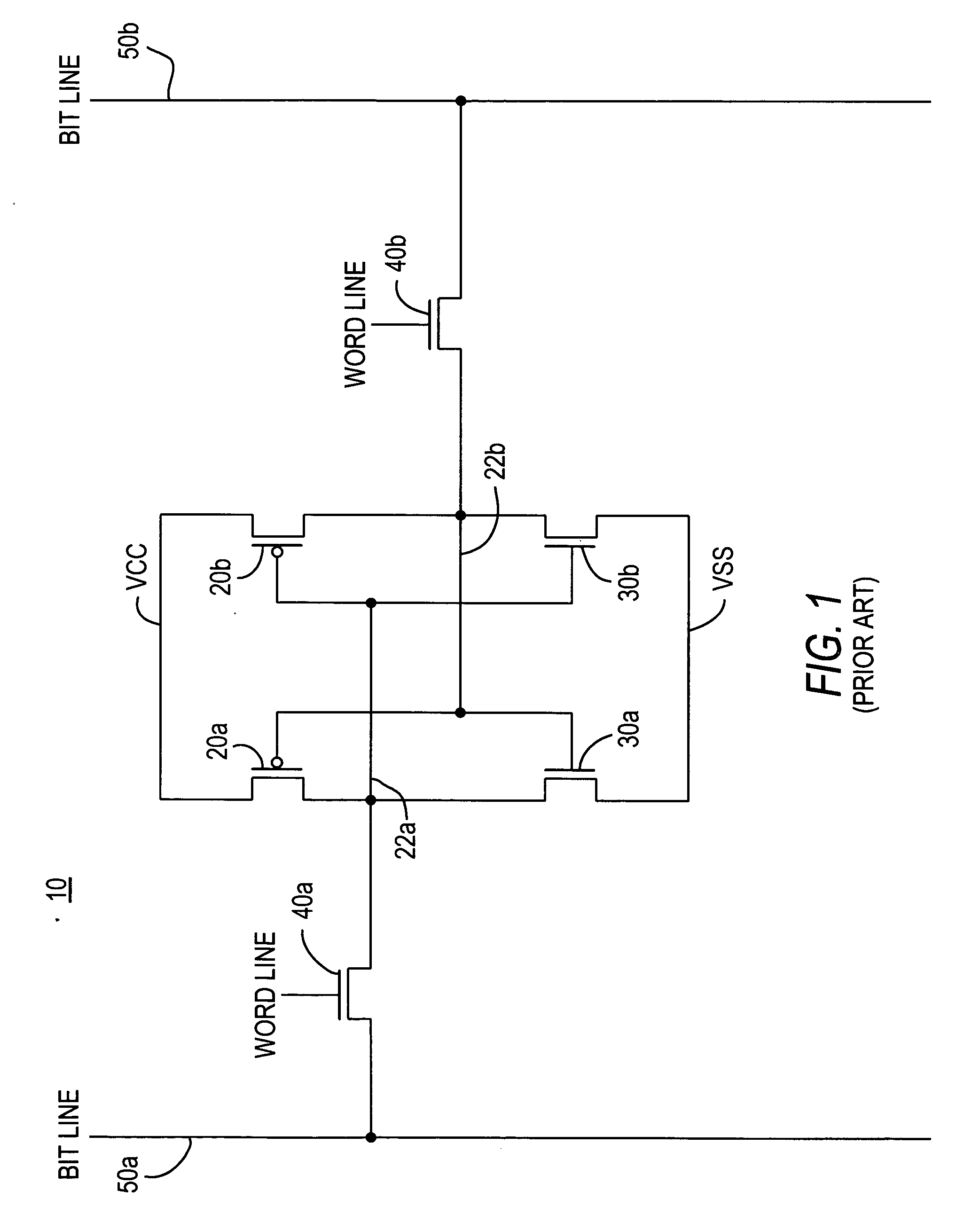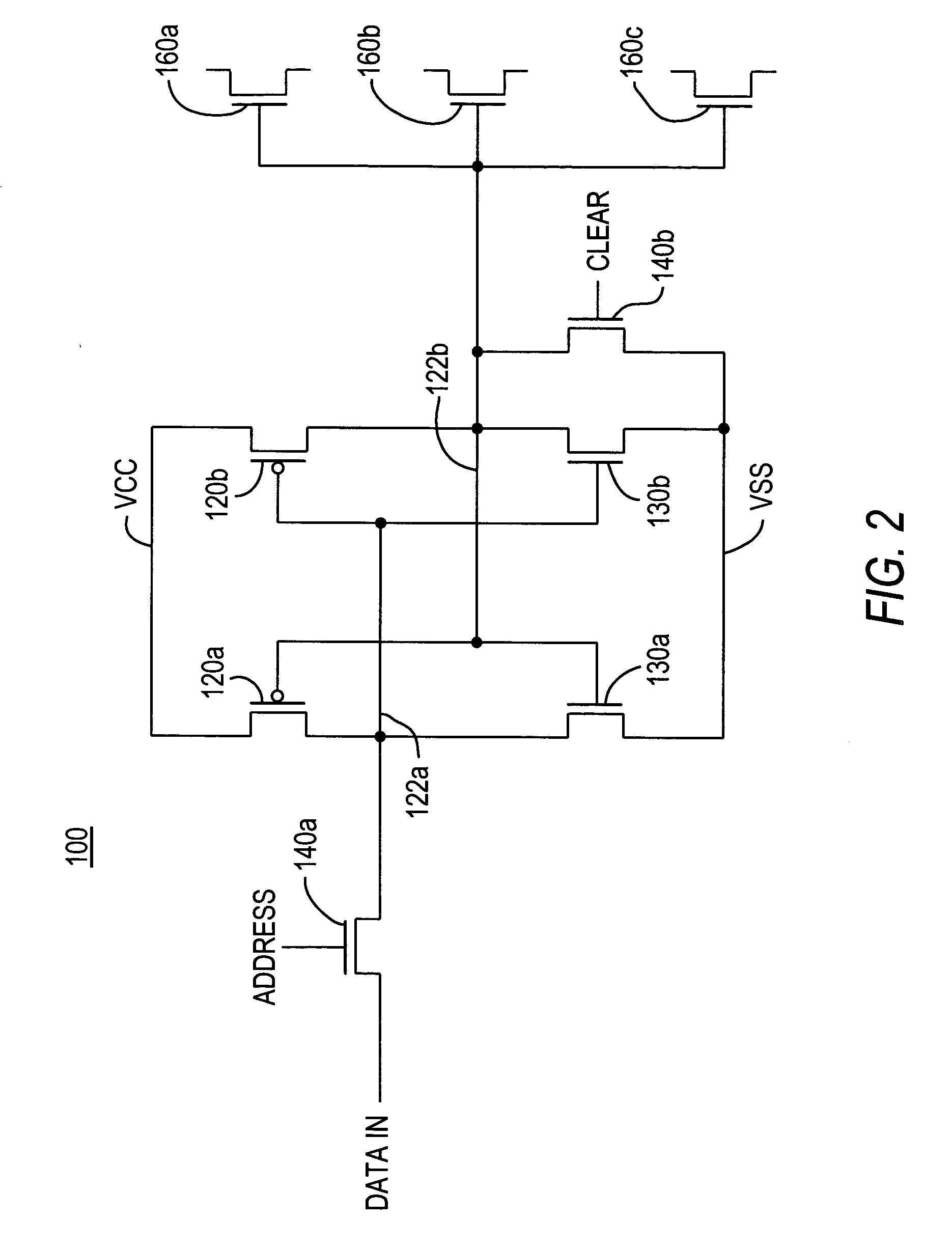Integrated circuit structures for increasing resistance to single event upset
a technology of integrated circuits and events, applied in semiconductor devices, digital storage, instruments, etc., can solve problems such as memory cell “flipping”, memory cell error, and affected ic to malfunction, and achieve the effect of increasing the resistance to such an event, increasing the capacitance, and significantly increasing the capacitan
- Summary
- Abstract
- Description
- Claims
- Application Information
AI Technical Summary
Benefits of technology
Problems solved by technology
Method used
Image
Examples
Embodiment Construction
[0010]FIG. 1 shows a conventional static random access memory (“SRAM”) cell 10 of the type that may be used, for example, on a field programmable gate array (“FPGA”) IC. For example, cells of this type may be used to provide blocks of random access memory (so-called “user RAM”) on an FPGA. In cell 10, PMOS transistor 20a is connected in series with NMOS transistor 30a between a source of relatively high electrical potential VCC (or logic 1) and a source of relatively low electrical potential VSS (or logic 0 or ground). PMOS transistor 20b is similarly connected in series with NMOS transistor 30b between VCC and VSS. Node 22a is connected between transistors 20a and 30a and between the gates of transistors 20b and 30b. Node 22b is connected between transistors 20b and 30b and between the gates of transistors 20a and 30a. Node 22a is selectively connectable to bit line 50a via NMOS transistor 40a. Node 22b is selectively connectable to bit line 50b via NMOS transistor 40b.
[0011] When...
PUM
 Login to View More
Login to View More Abstract
Description
Claims
Application Information
 Login to View More
Login to View More - R&D
- Intellectual Property
- Life Sciences
- Materials
- Tech Scout
- Unparalleled Data Quality
- Higher Quality Content
- 60% Fewer Hallucinations
Browse by: Latest US Patents, China's latest patents, Technical Efficacy Thesaurus, Application Domain, Technology Topic, Popular Technical Reports.
© 2025 PatSnap. All rights reserved.Legal|Privacy policy|Modern Slavery Act Transparency Statement|Sitemap|About US| Contact US: help@patsnap.com



